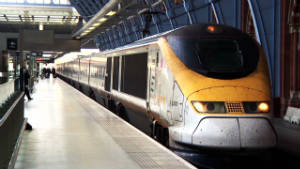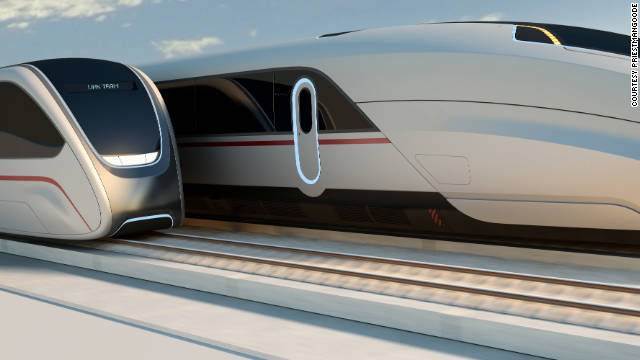- "Moving Platforms" is an integrated tram-to-train concept
- Passengers would cross between tram and train without either vehicle stopping
- It's the work of British designer Paul Priestman
London (CNN) -- A designer has come up with a unique and futuristic solution for speeding up rail travel: he doesn't want to change the engines, or the tracks -- he wants to get rid of the stations.
Determined to take rail transport into the 21st century, Paul Priestman, director of British design group Priestmangoode, is the man behind the "Moving Platforms" concept, which he believes could potentially revolutionize the rail industry.
His scheme would see travelers served by a carousel of trams and high-speed trains that would take passengers from their homes to their destinations without them ever having to use a bus, car or taxi.
 Revolutionizing rail travel
Revolutionizing rail travel"The idea with Moving Platforms is that ... if you were going on holiday or on business for instance, you could get onto a tram on your street and then seamlessly travel from that onto the high-speed line and then get off at your destination in another city, then onto a tram and then end up at your destination without ever having gone in your car or perhaps got on a bus," says Priestman.
"It's totally integrated into a sort of larger transport system," he adds.
The idea is to have a city-wide network of trams that travel in a loop and connect with a high-speed rail service.
Paul Priestman
But instead of passengers having to get off the tram at a rail station and wait for the next HSR service to arrive, the moving tram would "dock" with a moving train, allowing passengers to cross between tram and train without either vehicle ever stopping.
"The trams speed up and the high-speed train slows down and they join, so they dock at high speed," explains Priestman.
"They stay docked for the same amount of time that it would stop at a station," he adds.
"There are big doors, there are wide doors, they're all the same level so you can seamlessly go between the two vehicles quite peacefully; there's no hurry.
"Then, when everyone's done that, the doors shut and then the trains separate and the tram then goes back into the city or town and picks up more passengers and drops off passengers."
Instead of using paper tickets to pass through a barrier, passengers would used an RFID (radio-frequency identification) system to transfer from tram to train. Similar systems that let passengers scan pre-paid smartcards are already used on many public transport networks.
While Priestman admits that it will be some time before his vision could be implemented, he says the time has come to rethink how we travel.
"This idea is a far-future thought but wouldn't it be brilliant to just re-evaluate and just re-think the whole process?" he says.










{ 0 comments... Views All / Send Comment! }
Posting Komentar